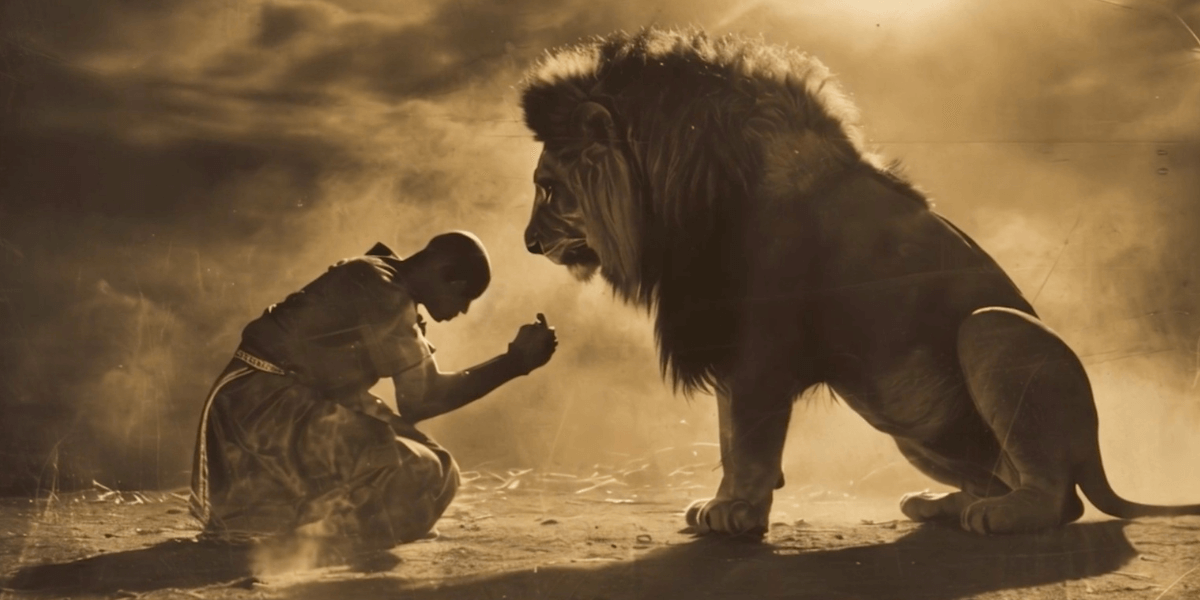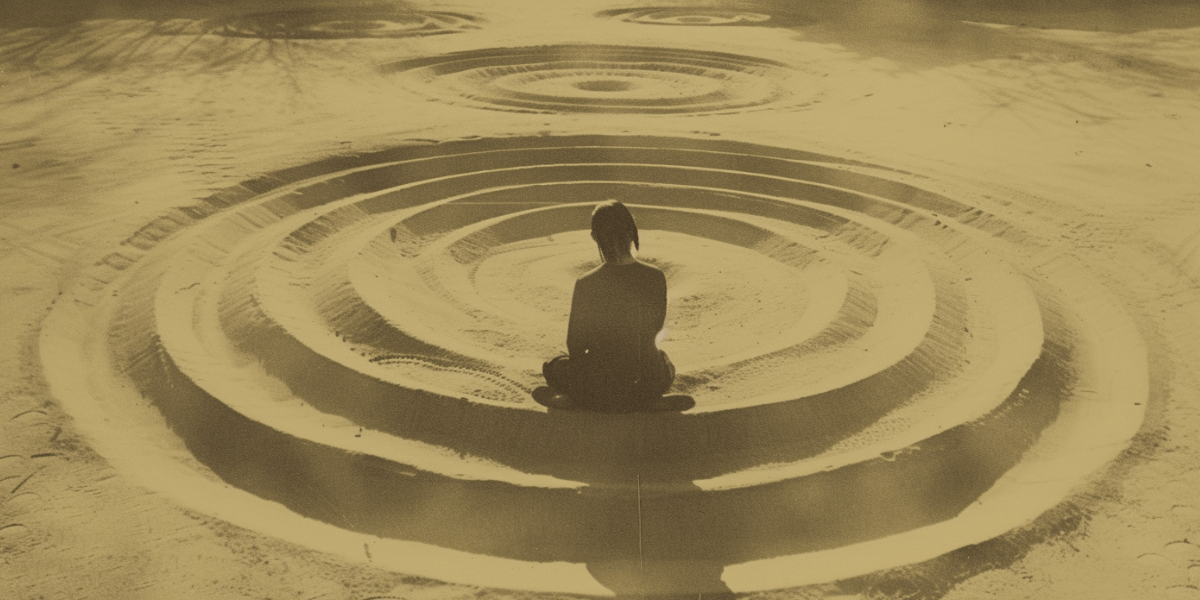Simply put, spirituality is a belief there is something at work in the world that is greater than just you. There is a mystery, a power, a connection between us and everything else that exists. It holds us together, guides us, and comforts us. Spirituality is an intricate, complicated subject that has been explored for centuries as humankind reaches for understanding of the self and its role in the cosmos, a sense of internal peace, and a catalyst for personal growth and change.
The libraries of the world are full of book after book on spirituality (link to pillar article) - millions of titles, in fact - yet few discuss the distinction between the masculine and the feminine aspects of faith. It’s certainly not promoted in churches, synagogues, temples, and mosques. This difference is of paramount importance and has a profound influence on one’s spiritual journey and personal development.

Action, logic, and strength are at the core of masculine spirituality. So are assertiveness, independence, and resilience. All of these traits are often seen as traditionally masculine. Cultures and religions around the world celebrate a leading figure in their belief system who embodies masculine spirituality. In Christianity, the figure of Jesus Christ embodies masculine spirituality through leadership, sacrifice, and unwavering strength in the face of adversity. In Islam, Mohammed took Mecca in conquest and married many women in order to offer them protection after they lost their husbands, both highly masculine actions.
Masculine spirituality has implications far beyond an individual. Qualities such as courage, determination, and responsibility can drive communities forward.
Combined with wisdom, male spirituality inspires others to take action and make a difference through their decisions and actions.
Male spirituality then is an actor, a doer, a mover, a force.
Conversely, feminine spirituality is often associated with nurturing, intuition, and emotion. It places emphasis on qualities such as compassion, empathy, and receptivity, traits traditionally seen as feminine. Examples of feminine spirituality abound. In Hinduism, the fierce, compassionate goddess Kali represents feminine power and energy, embodying the strength and resilience of women, and serves as a symbol of empowerment.
Feminine spirituality plays a significant role in personal development and society.
The feminine is essential for building the strong bonds that keep communities together as well as nurturing individuals so they might grow, develop, and flourish.
It’s a force that inspires individuals to connect on a deeper level, and therefore, she helps build a more compassionate world.

Masculine and feminine spirituality are not diametrically opposed, they are two sides of the human experience. Both forms of spirituality seek to promote personal growth, self-understanding, and a deeper connection with the universe. Both play crucial roles in shaping society and culture, influencing our values, beliefs, and behaviors and contributing to the richness and diversity of human experience. They provide different perspectives and approaches to spirituality, offering a more comprehensive understanding of the self and the universe.
These differences in feminine and masculine spirituality reflect the diverse ways in which individuals can connect with their spirituality, offering a range of paths for spiritual exploration and growth. An individual, regardless of gender, can move between the two, drawing upon what suits the situation or need best. Drawing upon all the strengths and qualities of the masculine and feminine allows for a more personalized and meaningful spiritual journey. Together, the two provide a balance of energies, fostering a more holistic and balanced approach to the self and outer world.
Finding and maintaining balance between masculine and feminine energies is essential for becoming spiritually whole. This balance allows men and women to draw upon the strengths of the other, moving in and out of states of being, to progress and strengthen the best qualities of our world. For the individual, an open embrace of both masculine and feminine spirituality offers a wider range of insights and experiences, creating a richer, more satisfying life.
Balance between the two types of spirituality ups an individual’s prospects for success in life. Beth Ford, the first female CEO of all things dairy, Land O’ Lakes, keeps a massive agricultural co-op at the top of its industry while implementing programs and practices to unify hundreds of farmers. She asked her farmers what they needed to make their lives better, and it turned out it was good for profits as well. Her initiatives are bringing broadband to rural communities and focusing on policies about global food security. She is strong, ambitious, and progressive while focusing on connection and nurturing her farmers. And she’s grown into one of the most dynamic CEOs in America.
Achieving this balance involves recognizing and embracing both masculine and feminine aspects within oneself. It may also involve practices such as meditation, mindfulness, and self-reflection, which can help individuals connect with their inner masculine and feminine energies, fostering a deeper understanding of the self and the universe and facilitating a more balanced and harmonious spiritual journey. These practices can help individuals cultivate a more balanced and harmonious approach to spirituality, fostering a deeper connection with the self and the universe.

Masculine spirituality often focuses on restraint, control, and the domination of natural systems. It is associated with consciousness and the capacity to focus on one thing to the exclusion of all else. On the other hand, feminine spirituality is often rooted in nature and the body; feminine spirituality is not divorced from consciousness but is an integral part of it.
Jung's concepts of anima (the feminine aspect within the male psyche) and animus (the masculine aspect within the female psyche) are perfect examples of these spiritual concepts. Jung believed that for a person to achieve wholeness, they must integrate their anima or animus into their conscious self. This integration process mirrors the journey of merging masculine and feminine spiritualities.
In the context of masculine spirituality, the animus represents the rational, logical, and assertive aspects of the psyche. It aligns with the idea of focusing and controlling one's consciousness. Conversely, the anima, in the context of feminine spirituality, represents the intuitive, emotional, and nurturing aspects of the psyche. It aligns with the idea of merging with reality and accessing the secrets of nature.
The integration of masculine and feminine spirituality into the psyche is a process of balancing these opposing forces. It involves acknowledging and embracing both the rational and intuitive, the assertive and nurturing, and the conscious and unconscious aspects of our being. This integration is akin to Jung's process of individuation, where a person becomes aware of their unconscious aspects and integrates them into their conscious self.
In practical terms, this integration might involve practices that engage both the rational and intuitive aspects of the psyche. For instance, meditation can be a tool for focusing the mind (a masculine spiritual aspect) while also tapping into the intuitive, unconscious realms (a feminine spiritual aspect.)

The concepts of masculine and feminine spirituality, as they relate to Jung's ideas of anima and animus, offer a unique perspective on personal growth and self-understanding. One can be the girl boss and an enthusiastic homemaker. A football player loves to come hard off the line during his day job but lives to paint with watercolors off-season. By integrating these aspects into our psyche, we can achieve a more balanced and holistic sense of self. This integration is not just a spiritual journey but a psychological one, offering a path toward greater self-awareness and personal wholeness.
Masculine spirituality, historically dominant in many cultures, often emphasizes restraint, focus, and control. It's characterized by a single-minded pursuit of enlightenment or a higher power, often at the expense of the body's natural instincts and desires. This perspective has traditionally placed men in leadership roles, both in spiritual and societal contexts, and has led to a hierarchical structure where men are seen as protectors and providers.
On the other hand, feminine spirituality is deeply rooted in nature and interdependence. It values the body as a vessel of communication with the world and recognizes the power of Eros, the life force that drives creativity and passion. Feminine spirituality seeks to balance the spiritual and the natural, allowing for a more holistic view of life. The feminine often “feels” it before she goes to work on it with her critical thinking and rationality.
The imbalance between these two spiritual perspectives has profound implications for societal structures and issues. For instance, the overemphasis on masculine spirituality has often led to the suppression of feminine qualities, both in individuals and society. Christianity’s Templars are a good example here, battling and pillaging in the name of Christ. Women have been expected to conform to masculine norms, often at the expense of their unique strengths and capabilities. Instead of being locked away in nunneries or their father’s house, what would the world be like if St. Theresa of Avila was in the pulpit? We will never know.

This imbalance also impacts gender roles. The masculine ethos of control and dominance has often relegated women to subservient roles, both in spiritual traditions and societal structures. This has led to a skewed perception of women's power and potential, often resulting in their marginalization and objectification. Leadership styles are also influenced by this spiritual dichotomy.
Cultures that put value on half the population - women - are often more developed, progressive, and attentive to human rights than those who do not, making the feminine a massive, barely-tapped resource that could revolutionize the world.
Masculine spirituality's focus on control and dominance often results in autocratic leadership styles, where power is concentrated at the top. In contrast, feminine spirituality, with its emphasis on interdependence and collaboration, fosters more democratic and inclusive leadership styles. Simply compare the quality of life in New Zealand to that of Iran.
Community values, too, are shaped by the balance or imbalance of masculine and feminine spirituality. Communities dominated by masculine spirituality often value competition, individualism, and material success. In contrast, communities where feminine spirituality is valued tend to prioritize cooperation, harmony, and emotional well-being. Spend a day in the community of Wall Street, New York City, and then travel to Woodstock, New York. The first is as masculine as it gets; the second was created in the classically feminine era of the “hippie” who valued peace, love, and crafty t-shirts.
Recognizing and addressing this imbalance is crucial for fostering a more inclusive, equitable, and holistic society. The feminine must be at work alongside the masculine for our world to remain whole and survive. When the numbers come in - “only 3% of all CEOs are women!” or “Congress is all male!” those numbers are actually saying that the world is out of balance and needs a correction. By embracing both masculine and feminine spiritual perspectives, we can create a society that values all its members' unique strengths and contributions.
Understanding the difference between masculine and feminine spirituality is crucial for personal and societal development. Both forms of spirituality offer unique perspectives and strengths that enrich one's spiritual journey. By recognizing and balancing these energies, individuals can embark on a more fulfilling and holistic spiritual journey, fostering a deeper connection with the self and the universe. This understanding can lead to a more harmonious and progressive society where the strengths of both masculine and feminine spirituality are recognized and valued, contributing to a more balanced and compassionate world.